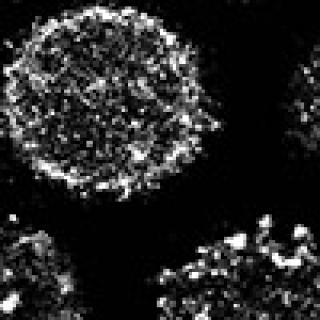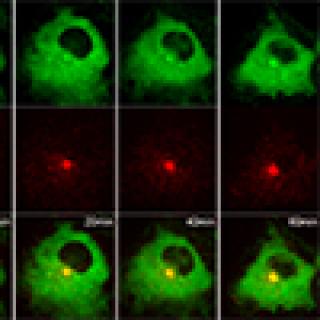Our Discoveries
Researchers develop a new imaging technique to measure cancer metabolism
CCR researchers have developed a new technique to show metabolism from MRI images by reducing the amount of noise in those images, resulting in significantly improved quality. This breakthrough enables researchers to see biochemical processes, paving the way for a deeper understanding of tumors and potentially improved diagnosis and treatment.
Read MoreTumor cells in transparent fish reveal physical and molecular factors that determine metastasis sites
CCR researchers used zebrafish to discover that particular sites colonized by migrating tumor cells are determined by both the physical architecture of tissue and the cells’ molecular compatibility with their microenvironment.
Read MoreFDA grants breakthrough therapy designation of new TIL therapy for advanced cervical cancer
In May 2019, the FDA granted breakthrough therapy designation to a tumor-infiltrating lymphocyte (TIL) therapy technology known as LN-145 to treat advanced cervical cancer based on data presented by CCR collaborator Iovance Biotherapeutics.
Read MoreIn patients with severe chronic lymphocytic leukemia, B cells get stuck in hyperactive mode
Analyzing how cancer cells respond to stress signals could help clinicians assess the severity of disease in patients with chronic lymphocytic leukemia, according to new research from the Center for Cancer Research, Memorial Sloan Kettering Cancer Center and the National Heart, Lung and Blood Institute.
Read MoreNew mechanism for regulating differentiation discovered in human embryonic stem cells
Researchers in the Center for Cancer Research have discovered a new mechanism involving a nuclease complex called the RNA exosome that represses differentiation of human embryonic stem cells. This represents the first time this mechanism has been studied in these cells.
Read MoreGene-regulating microRNAs gain control over hundreds of new genes with common sequence modification
MicroRNAs have an enormous influence over what happens inside cells. By blocking the activity of specific sets of genes, they help control virtually every known biological pathway and process. Disruptions in microRNAs have been linked to many diseases, and understanding how these molecules function, which genes they control and how they themselves are regulated are high priorities in cancer research.
Read MoreGastrointestinal tumors harbor T cells that recognize patients’ unique tumor antigens
CCR scientists, led by Steven A. Rosenberg, M.D., Ph.D., have determined that many common gastrointestinal tumors bear mutations capable of eliciting an immune response, suggesting that immunotherapy could be an effective way to treat these common cancers.
Read MoreResearch shows long noncoding RNA influences expression of key HIV receptor
New research from the Center for Cancer Research has identified a long noncoding RNA that influences the expression of CCR5, a receptor that HIV uses to infect immune cells. The finding points to the molecule as a potential marker that indicates a patient’s susceptibility to the virus.
Read MoreAkt protein kinase pathway regulates key step in the initiation of cilia formation
CCR investigators have discovered that activating the Akt protein kinase pathway stabilizes the binding of the WDR44 protein to the Rab11 protein. This prevents Rab11 from binding to the Rabin8 protein, thereby blocking cilia formation. When Akt is inactive, though, Rab11 instead is bound by FIP3, enhancing its binding to Rabin8, which helps initiate cilia formation. Since abnormalities in cilia formation are associated with a number of types of cancer, these findings point to several potential targets for cancer therapy.
Read MoreBacterial compound targets cancer-promoting RNA
Screening more than 3,000 natural products identified a compound that stops the growth of cancer cells by targeting a growth-promoting microRNA.
Read More








